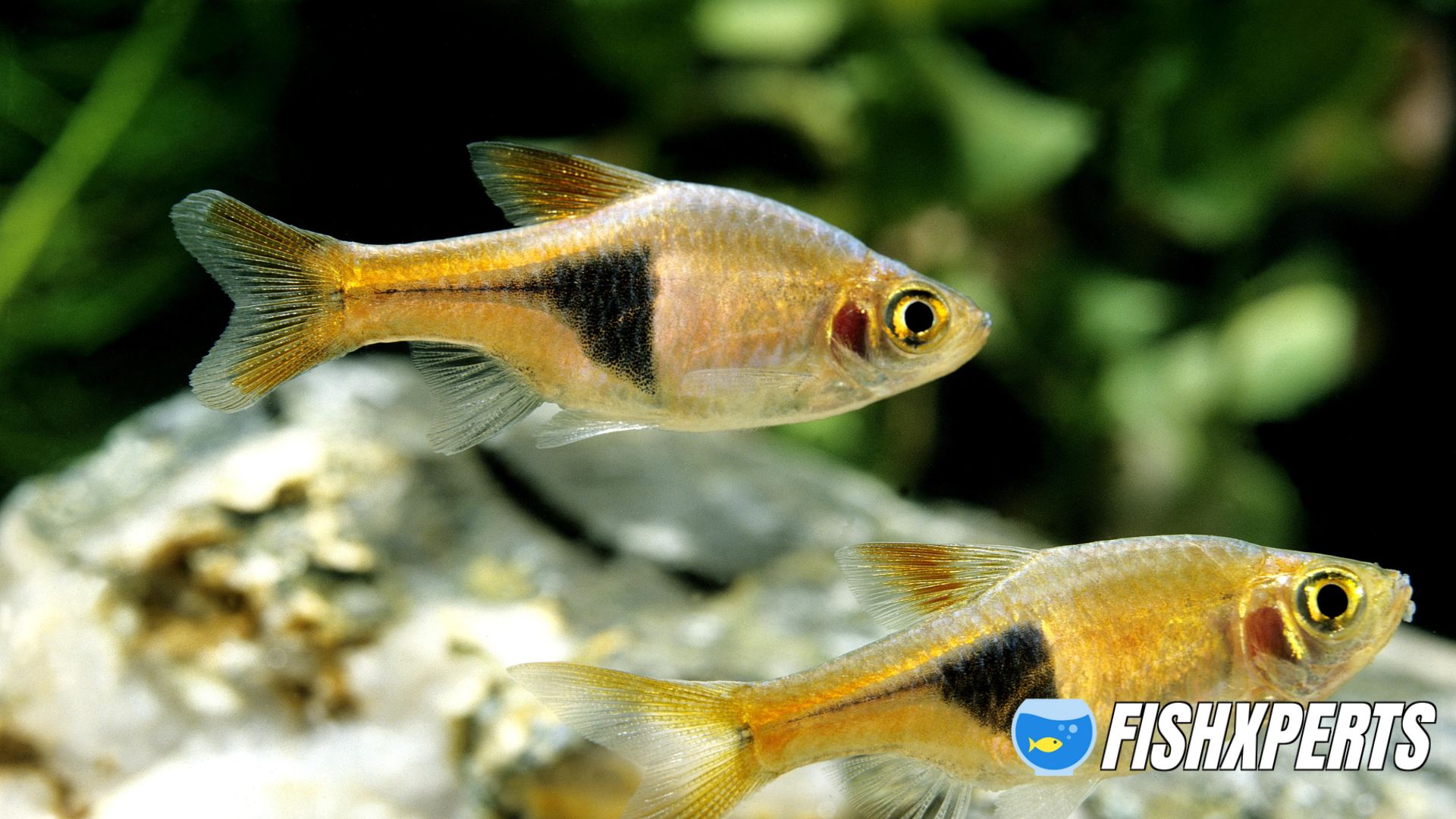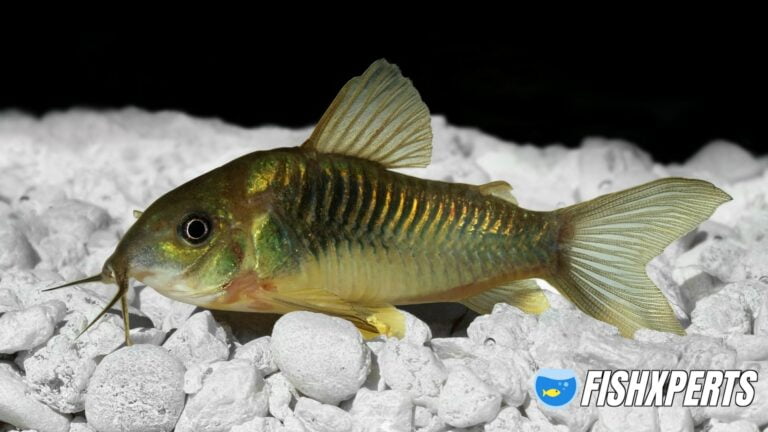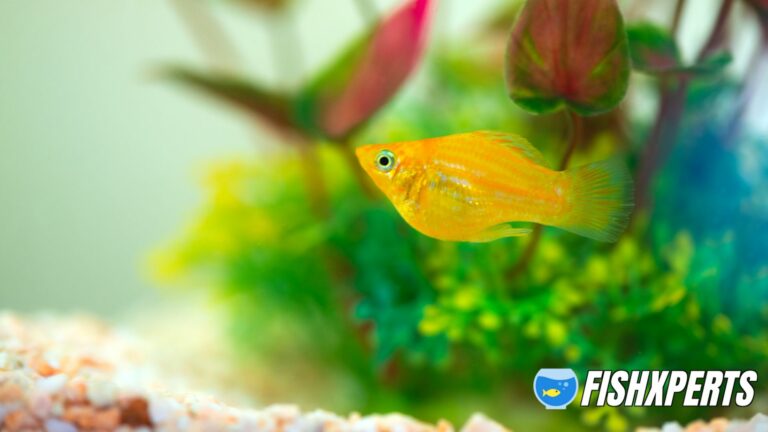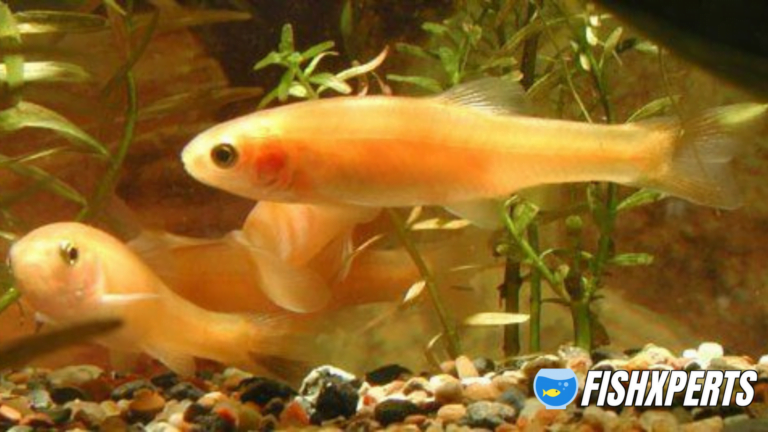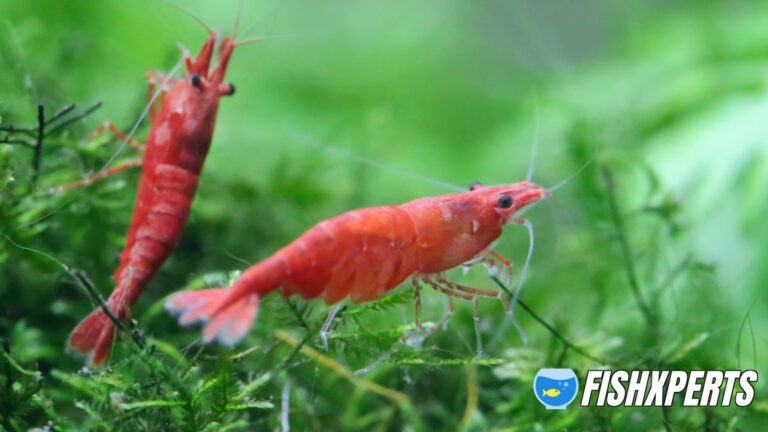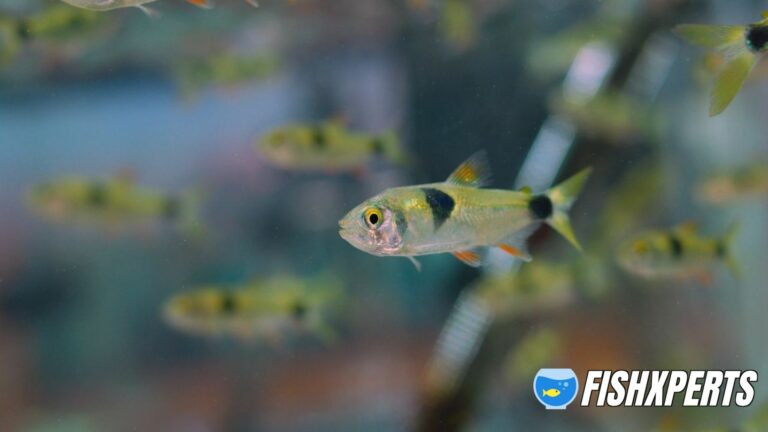Harlequin Rasbora Care
Overview
The Harlequin Rasbora (Trigonostigma heteromorpha) is a small, freshwater fish native to Southeast Asia. It is a member of the Cyprinidae family and is closely related to the Goldfish (Carassius auratus). The fish is named for its distinctive coloration, which is a orange-red body with black spots.
The Harlequin Rasbora is a popular aquarium fish due to its bright colors and peaceful nature. The fish is relatively easy to care for and can be kept in a community tank with other peaceful fish. The fish is omnivorous and will eat most commercially available fish foods.
The fish is native to Southeast Asia and is found in Thailand, Malaysia, and Indonesia. The fish prefers slow moving water and can be found in rice paddies, canals, and other slow moving bodies of water.
The fish is sexually dimorphic, with males being slightly smaller than females. The fish can reach a maximum size of 2.5 inches (6.4 cm). The fish has a lifespan of 5-7 years.
The fish is bred in captivity and is commercially available. The fish is not listed as endangered or threatened.
The Harlequin Rasbora is a popular aquarium fish due to its bright colors and peaceful nature. The fish is relatively easy to care for and can be kept in a community tank with other peaceful fish. The fish is omnivorous and will eat most commercially available fish foods.
The Harlequin Rasbora is a striking and popular fish that makes a great addition to any freshwater aquarium. They are relatively easy to care for, but there are a few things to keep in mind to ensure they stay healthy and happy.
Lifespan
Harlequin rasboras typically have a lifespan of 3 to 5 years. However, with proper care and tank maintenance, they can live up to 8 years.
Appearance
Harlequin Rasboras are easily identified by their distinctive coloration. They have a bright red body with a black triangle shaped marking on their dorsal fin. Their fins are transparent with red tips. Males and females are similar in appearance, but males tend to be slightly larger. Females also have a rounder body shape. These fish are very beautiful and make a great addition to any freshwater aquarium.
Harlequin Rasbora Size
The Harlequin Rasbora is a small fish, only reaching a maximum size of 2.5 inches (6.4 cm). This makes them an ideal fish for smaller aquariums or nano tanks. They are a peaceful fish that can be kept with a variety of other fish species.
Tank Size
As these are small in size they do not require a large tank. A 20 gallon tank is sufficient for a small group of these fish. However, if you want to keep a larger group of fish, or if you want to keep other fish with your harlequin rasboras, you will need a larger tank.
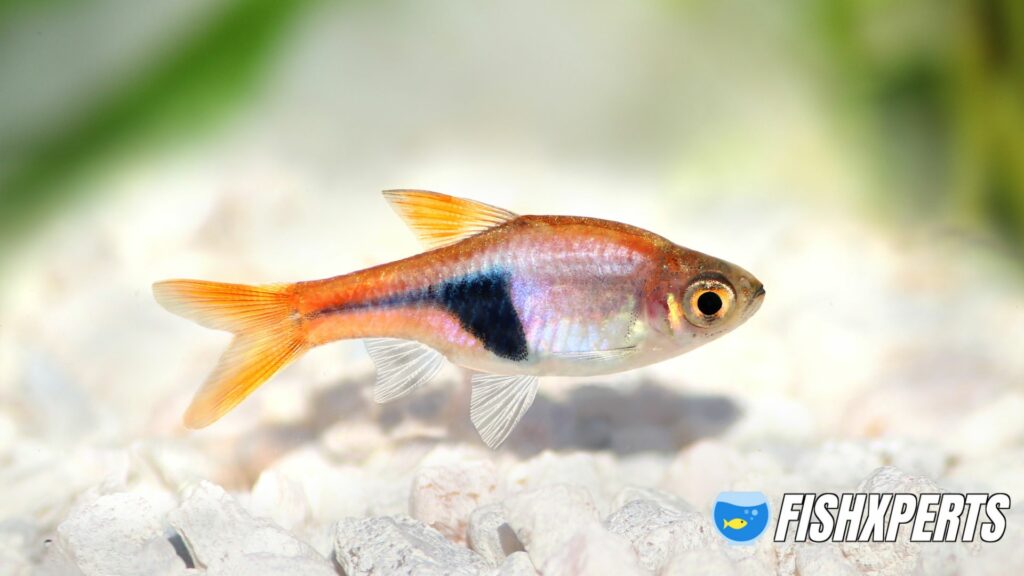
Harlequin rasboras are active fish, so they need plenty of swimming space. They also prefer to have some hiding places, so you should include some plants or other decorations in your tank.
Water Parameters
Barred rasboras are found in slow-moving waters of South-East Asia, in countries such as Thailand and Malaysia. They prefer slightly acidic water with a temperature between 22-26 degrees Celsius and a neutral to slightly alkaline pH.
Barred rasboras are a hardy species and can adapt to a wide range of water conditions. However, it is important to maintain good water quality and stability in the aquarium to ensure the health of the fish.
Water parameters that should be monitored include: temperature, pH, ammonia, nitrite and nitrate. Regular water changes are also necessary to maintain water quality and remove toxins from the water.
Diseases To Watch Out For
When keeping harlequin rasboras, there are a few diseases to be aware of. The most common is Neon Tetra Disease, which is caused by a bacteria that attacks the fish’s swim bladder. This can cause the fish to swim erratically and eventually die. Another disease to watch out for is Ich, which is caused by a parasites that attach to the fish’s skin and fins. This can cause the fish to itch and scratch, and eventually lead to death.
Food & Diet Recommendations
Harlequin Rasboras are omnivores and will consume a variety of both meaty and vegetable based foods. In the wild they feed on small insects, crustaceans, and plant matter. In the home aquarium they will readily accept most commercially available fish foods, including pellets, flakes, and freeze-dried foods. It is best to provide a varied diet to ensure optimal health and growth.
For optimal health, it is recommended to feed Harlequin Rasboras a diet that consists of:
- 50% meaty foods, such as frozen or live foods (bloodworms, brine shrimp, daphnia, etc.)
- 50% vegetable matter, such as floating pellets or flakes that contain algae or spirulina.
Temperament & General Behavior
Harlequin Rasboras are peaceful, active fish that make great additions to any community aquarium. They are relatively shy fish, so it is best to keep them in groups of at least six. They are not aggressive and will do well with other peaceful fish. Harlequin Rasboras prefer to stay in the middle to top areas of the aquarium and are constantly in motion. They are very active fish and love to play.
Tank Mates
Harlequin rasboras are a peaceful and social fish, making them an ideal candidate for community tanks. When choosing tank mates for harlequin rasboras, it is important to consider the fish’s size, temperament, and diet.
Harlequin rasboras are relatively small fish, so they should be paired with fish of a similar size. Avoid tank mates that are too large, as they may bully or intimidate the harlequin rasboras.
It is also important to choose tank mates with a similar temperament. Harlequin rasboras are peaceful fish, so they should be paired with other peaceful fish. Avoid tank mates that are known to be aggressive or nippy, as they may stress or harm the harlequin rasboras.
When it comes to diet, harlequin rasboras are omnivores. They will eat most types of fish food, including flakes, pellets, and live foods. When choosing tank mates, it is important to consider the fish’s diet and make sure that they will be able to find food that they can eat.
Breeding
Harlequin rasboras are easy to breed in the home aquarium. They are egg-layers, and the female will lay up to 200 eggs at a time. The eggs will hatch in about 24 hours.
To induce spawning, the water should be slightly acidic with a pH of 6.5-7.0. The temperature should be around 78 degrees Fahrenheit. The tank should be well-planted with plenty of hiding places for the fry.
When the female is ready to lay her eggs, she will swim to the surface and release them. The male will then fertilize them. The parents should be removed from the tank after spawning, as they may eat the eggs.
The fry will hatch in 24 hours and should be fed small live foods such as infusoria or newly hatched brine shrimp. They will grow quickly and be big enough to accept regular fish food within a few weeks.
FAQ
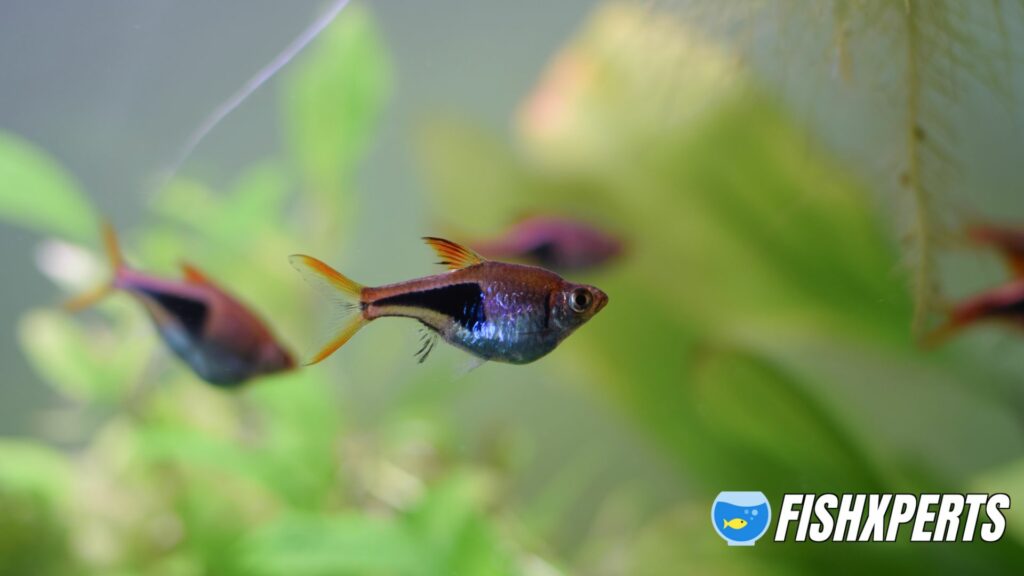
How Often Should You Feed Harlequin Rasbora?
Harlequin Rasbora are a type of fish that are native to Southeast Asia. They are a peaceful fish that do well in community tanks. They are omnivorous and will eat a variety of foods, but prefer live and frozen foods.
Harlequin Rasbora should be fed 2-3 times per day. They are not fast eaters, so you should give them enough time to eat all the food. If you are using pellets or flakes, you can soak them in water for a few minutes to soften them before feeding.
Are Harlequin Rasboras Lone Or Societal In Nature?
Harlequin Rasboras are typically lone fish, but they can be societal if they are in a large enough tank with other peaceful fish.
How many harlequin rasboras should be kept together?
Ideally, a group of 8-10 harlequin rasboras would be best. They are a schooling fish and do best when kept in groups.
What temperature do harlequin rasboras like?
Harlequin rasboras like a temperature range of 72-82 degrees Fahrenheit.
How many harlequin rasboras Can I put in a 10 gallon tank?
You can usually keep 5-6 harlequin rasboras in a 10 gallon tank.
How often should I feed harlequin rasbora?
Harlequin Rasbora are a schooling fish, so they should be kept in groups of 6 or more. They are peaceful community fish that do well in most aquariums. They are omnivores and will eat a variety of foods, but they prefer live or frozen foods. Feed them 2-3 times a day, and be sure to remove any uneaten food after a few minutes to prevent it from fouling the water.
How can I stop my Harlequin Rasbora from fighting?
If you want to stop your Harlequin Rasbora from fighting, you need to provide them with plenty of hiding places and cover in their aquarium. You can do this by adding plants, driftwood, or rocks. You should also make sure that the aquarium is not too small, as this can cause fish to become territorial. If you have more than one Harlequin Rasbora, you may need to increase the number of hiding places to reduce the likelihood of fighting.
Harlequin rasboras died, please help me figure out why?
There are a few potential reasons why your harlequin rasboras died. It is important to rule out any potential diseases or parasites before taking any further action. Once you have ruled out any underlying health issues, you can begin to look at other potential causes, such as water quality or stress.
One potential cause of death in harlequin rasboras is poor water quality. This can be due to a number of factors, such as high ammonia or nitrite levels, or low oxygen levels. If your rasboras were living in sub-standard water conditions, this could have eventually led to their death.
Another potential cause of death is stress. Stress can be caused by a number of factors, such as overcrowding, poor water quality, or lack of hiding places. If your rasboras were stressed, this could have weakened their immune systems and made them more susceptible to disease or infection.
If you are unsure of the exact cause of death in your harlequin rasboras, it is best to consult with a qualified aquarium professional. They will be able to help you rule out any potential health issues and provide you with advice on how to create a healthy environment for your fish.
Final Thoughts
If you’re looking for a peaceful, hardy fish that will add a splash of color to your aquarium, then you can’t go wrong with harlequin rasboras. These little fish are easy to care for and make a great addition to any community tank. Just be sure to give them plenty of hiding places and plenty of food, and they’ll be happy and healthy in no time.
Topics Covered

